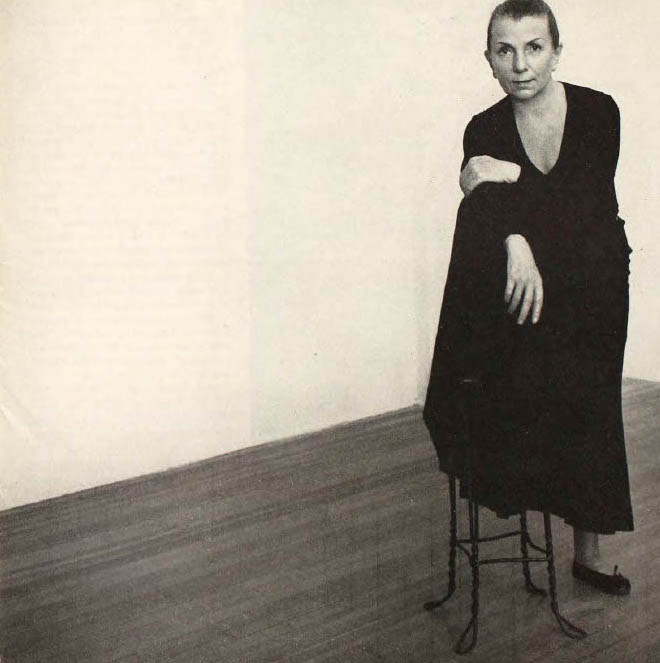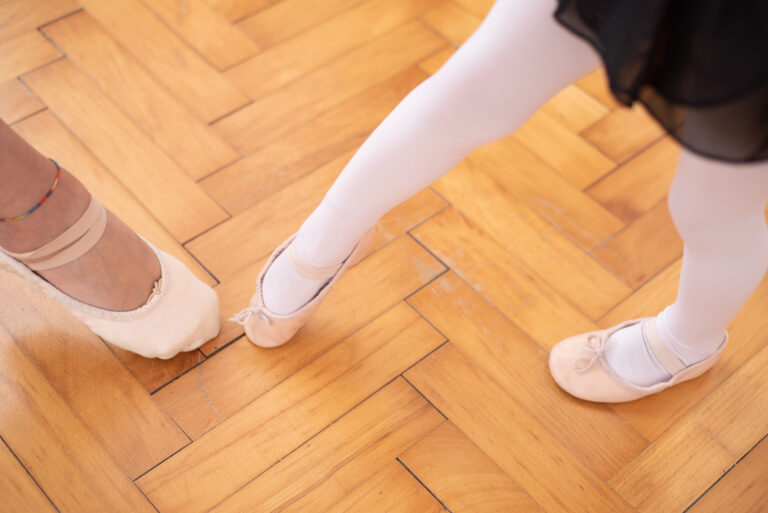
At the BalletMet Dance Academy in Columbus, Ohio, teacher Jilise Bushling Austin has students take a break from center and skip around the studio like rag dolls to loosen up the tension that forms during barre. “I tell them to shake everything out,” she says. “If they have a tense upper body, then the legs don’t respond correctly. It’s almost like they’re dancing on stilts.” Ease and movement in the upper body allows for bigger pliés and higher jumps, Austin says. “The joints all need to work together.”
Dancers show tension when they’re tired, stressed or struggling with a difficult step. Tense muscles shorten, preventing extension through the upper back and making it difficult to fully coordinate the arms and legs. Some students even hold their breaths because they’re working so hard, causing tension to build in their arms, shoulders, necks and even faces. Teachers can offer relaxation strategies to reduce this strain and keep dancers from developing stiff mannerisms that might negatively impact their technique and artistry.
1. Relax
“Students need to find their personal groove, and they can’t do it unless they have a relaxed sense of mobility in their joints,” says Erinn Liebhard, teaching artist for The Cowles Center for Dance & the Performing Arts and Winona State University in Minnesota. She starts her jazz class with a warm-up designed to help dancers feel the floor and release their knees, shoulders and arms. “Then, when it comes to moving in a more organized way, like doing a battement from second position, the dancers aren’t fighting themselves,” she says.
If students find it difficult to release tension while in a standing position, Austin recommends starting class on the floor. Have them lie on their backs with feet and knees bent and shoulders’ width apart. “I take squishy balls the size of cantaloupes, put one under each student’s head and ask them to do tiny nose circles,” says Austin. “This simple exercise relaxes them.”
Then, still on the floor, students can practice port de bras, carrying their arms through positions while keeping their backs flat and abdominals engaged.
2. Think Anatomically
At The Ailey School in New York City, co-director Tracy Inman asks students to think about how they’re using their muscles. “The difference between tension and support, for example, is a big thing,” he says. “Tension is just grabbing. You support yourself by lengthening your muscles.” Using opposition and épaulement can also alleviate strain, as can moving the arms from the center of the back—not from the shoulders. “It’s an expansion of the trapezoids and rhomboids that supports the port de bras,” says Austin.
When it comes to holding tension in the shoulder area, Liebhard tells students to let the scapula drop into the back and to soften the rib cage and sternum. “In jazz, we’re isolating body parts to emphasize the music,” she says. “There’s a dichotomy because we’re asking students to put tension there, but in a way that doesn’t look or feel like it. You get a solid isolation when you don’t force it, but let it slide. That’s what the area is built to do anatomically.”
3. Find Expression
Facial tension can be the most challenging to overcome, says Inman, because dancers are eager to do things correctly and might not focus on artistic presentation in class. But these strained expressions, like any bad habit, can be hard to break. He urges his students to perform in class to prevent worried or labored looks. “Class is when they can pull out all the stops,” he says. “Nobody is writing a review. They should really go for it.”
Another approach is to have students make funny faces in front of the mirror: Press the lips together and squint the eyes, then open the mouth and eyes wide, and look up. Austin suggests making children who hold tension in their faces exaggerate their looks. “Make them go even further in that direction,” she says, which will encourage them to find more natural expressions.
Liebhard sometimes structures her class so that people dance with each other and move through the room with a partner. “They’re going to release tension in their faces and find more expression because they’re dancing with someone,” she says, “and not just staring at themselves in a mirror.”




